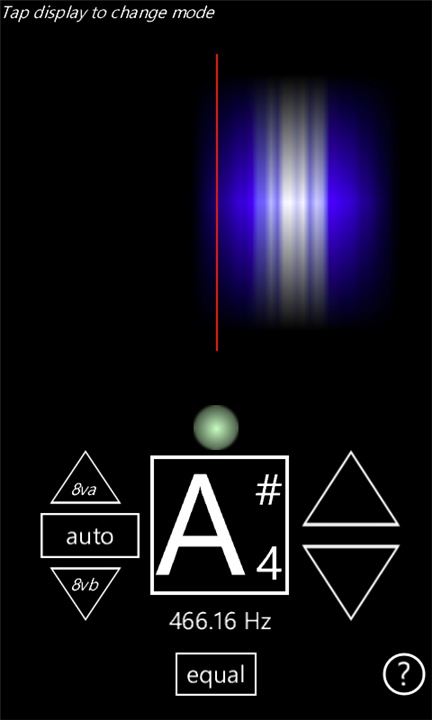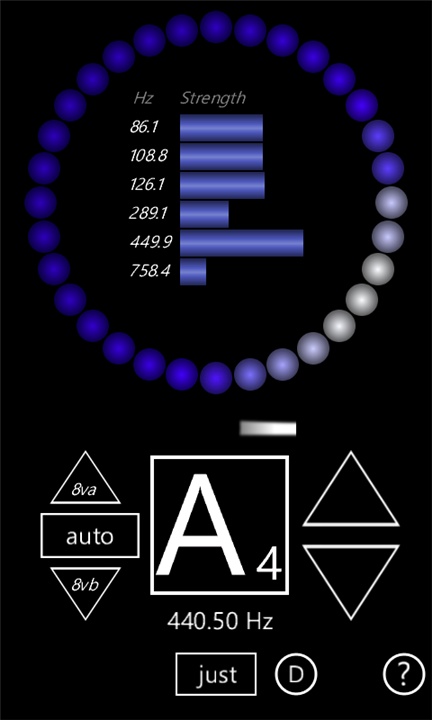Review: StrobeTuner
Score:
90%
As a somewhat untalented guitarist and the father of a daughter learning the violin, among other stringed instruments, there's no shortage of "Is this in tune?" moments in our household. Which means that I made a beeline for StrobeTuner, a full 'chromatic tuner' for Windows Phone, claiming to have every feature under the sun. What's more, it absolutely lived up to expectations.
Version Reviewed: 1.1
Buy Link | Download / Information Link
The idea of a chromatic tuner is to analyse the frequencies being picked up by a microphone, pick out a principal musical note and assess its closeness to the official frequency. A vibrating string actually emits multiple frequencies, including higher octaves, making chromatic tuning fraught with difficulties - powerful (or custom) hardware and software are needed to do the job properly.
With StrobeTuner on Windows Phone you've got both. (Apart from on some cheaper - e.g. early HTC - handsets, which apparently don't have a microphone of high enough quality to tune notes below 'G3' (the G below middle C) - I had no issues on my review handset, the Nokia Lumia 800.)
Dividing the screen of your Windows Phone roughly in two, the top half is used for an array of impressive (though not always useful) visualisations of the frequencies being detected and their closeness to the appropriate reference frequency:


The visualisations are somewhat distracting, but some are useful - the one shown above right was the most helpful, with the vertical line 'strobing' to the left if the tuned note was flat and to the right if it was sharp. The rate at which the line moves is proportional to the degree to which the note is 'out', making for an easy-to-see, intuitive method of tuning a note.
By default, StrobeTuner works in 'auto' mode, where it picks out the principal frequency and tries to match it to a known musical note, e.g. "A4". This does work quite well, though you've always got the auto-sensing algorithms running and, with an instrument with many strings (e.g. my 12 string guitar), there are usually lots of other frequencies resonating within the body of the instrument (even if the other strings are not being played). This means that if the string in question is more than half a semitone out, there's a good chance of the 'auto' system failing to pick up the note you want, which means you then have to pay extra attention to the large-fonted note name readout.
All of which is not a problem, though I did prefer (as on other, dedicated, tuners) to turn 'auto' off and to set the detected note up manually (e.g. 'E2', 'A3', etc.) That way, I know for sure that I can just watch the graphical indicators and rely on the notes being tuned to stay constant.


Between the controls and the visualisations is a representation of a traditional electronic tuner, with a central green 'LED" that comes on when the string/note is in tune and with bars to the left and right that indicate whether you're flat or sharp. These work well too, effectively (with the visualisations) giving two visual means of tuning your instrument.
For those that need it (I didn't), StrobeTuner also works with 'just intonation', an alternative way of dividing up each octave and used with certain specialist instruments.
I was suitably blown away by how responsive the displays and note detection were in StrobeTuner - any lag between plucking a string and seeing the result was negligible and I was able to tune guitar and violin as fast as with a dedicated electronic tuner. Job done, Danjonyma Software, that's one less gadget to carry around with me!
Steve Litchfield, All About Windows Phone, 9 January 2012
Reviewed by Steve Litchfield at
